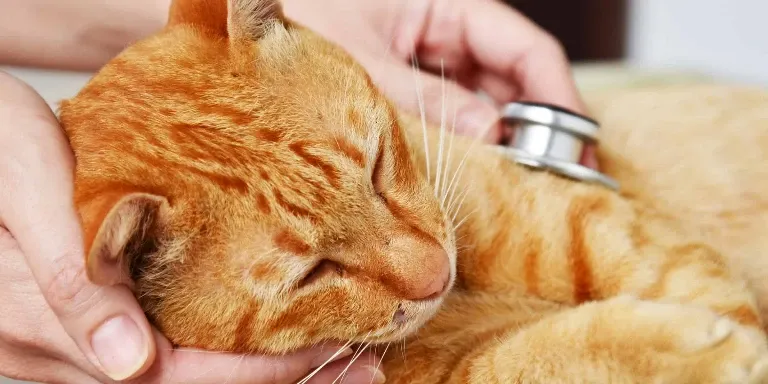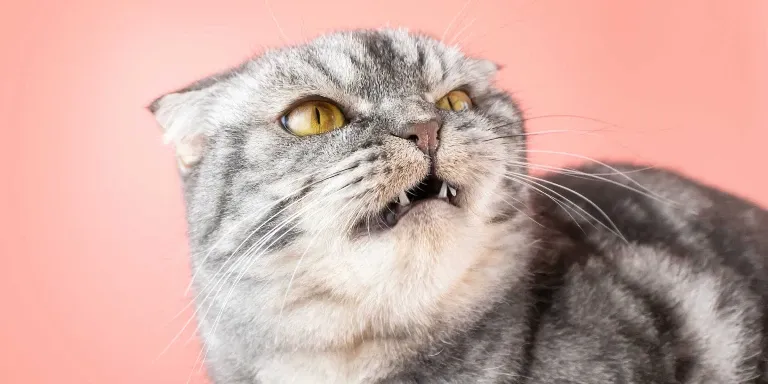The Best Fluffy Pancakes recipe you will fall in love with. Full of tips and tricks to help you make the best pancakes.

Did you know that there are over 100 different breeds of cats recognized by the International Cat Association (TICA)? Each breed boasts its unique set of physical traits, temperaments, and genetic predispositions.
With so many different breeds, you may wonder if they can mate with each other. The answer is yes, but it’s not always as simple as it sounds.
Breeding different cat breeds can lead to a range of outcomes, from healthy, happy kittens to potential health concerns and genetic predispositions. It’s essential to understand the basics of cat breeding and the potential implications of breeding different breeds before deciding to mate your cats.
In this article, we will dive into the possibilities of breeding different cat breeds, the health concerns and genetic predispositions that can arise, the physical traits and temperaments of various breeds, and the ethics and responsibility of breeding cats.
Understanding the Basics of Cat Breeding
You’re probably wondering how exactly cats mate and how different breeds can produce offspring together. Well, it all comes down to the basics of cat breeding.
In order for cats to mate, the female must first go into heat, which means she’s ready to mate and can become pregnant. During mating, the male cat will mount the female and the two will engage in copulation, which can last anywhere from a few seconds to several minutes.
When it comes to breeding different cat breeds together, there are regulations and ethical considerations that must be taken into account. In some cases, breeding two different breeds can result in offspring with health issues or genetic defects.
For example, breeding a Siamese cat with a Persian cat can result in offspring with respiratory issues due to the shape of their faces. Breeding regulations and ethical considerations help ensure that the health and well-being of the cats and their offspring are prioritized.
Overall, understanding the basics of cat breeding and the regulations and considerations surrounding it can help ensure a healthy and successful breeding process. Whether you’re breeding two cats of the same breed or two different breeds, it’s important to research and consult with professionals to ensure a safe and ethical process.
The Possibility of Mating Different Cat Breeds
Imagine the excitement of seeing a new and unique feline offspring that combines the best traits of two distinct breeds. The possibility of mating different cat breeds to create hybrid offspring is a fascinating subject that has piqued the interest of many cat breeders and enthusiasts.
However, before you embark on this endeavor, it’s essential to understand the breeding regulations that govern the process. Breeding regulations vary from country to country and even from state to state. In some places, it’s illegal to crossbreed different cat breeds, while in others, there are no strict regulations.
The primary concern with crossbreeding cats is ensuring the health and wellbeing of the offspring. Breeding two cats of different breeds can result in genetic disorders, which can be detrimental to the health of the hybrid offspring.
It’s also important to note that not all cat breeds are compatible for crossbreeding. Some breeds are too genetically dissimilar to produce viable offspring, while others may produce unhealthy or sterile offspring. Therefore, it’s crucial to do your research before attempting to mate different cat breeds.
Understanding the breeding regulations and the compatibility of the breeds can help you make informed decisions and increase the chances of producing healthy hybrid offspring.
Health Concerns and Genetic Predispositions
When considering breeding different cat breeds, it’s important to understand the potential risks involved.
Identifying health issues and genetic predispositions is crucial in ensuring the health and well-being of the offspring.
As such, genetic testing and health screening should be prioritized to mitigate any potential health concerns.
Understanding the Risks of Breeding Different Cat Breeds
If you’re considering breeding different cat breeds, it’s important to understand the potential risks involved. Breeding risks include the possibility of producing unhealthy offspring with genetic disorders, physical deformities, or behavioral problems.
One of the biggest concerns is the lack of genetic diversity, which can lead to a higher risk of health problems in the offspring. When you breed two different cat breeds, you’re essentially mixing two gene pools that may have different genetic predispositions. This can result in offspring that inherit the worst traits from both breeds, such as respiratory problems, joint issues, or even heart disease.
In addition, breeding different cat breeds can also result in temperament issues, as some breeds may have more aggressive tendencies than others. It’s important to do your research and understand the potential risks before breeding two different cat breeds.
Identifying Health Issues and Genetic Predispositions
Spotting health concerns and genetic predispositions is crucial when it comes to breeding cats of varying lineages. Different cat breeds have their own unique health issues and genetic predispositions that can be passed down to their offspring. As a responsible breeder, it’s important to identify these potential issues before mating two different cat breeds.
Here are some key considerations when identifying health issues and genetic predispositions:
- Conduct thorough health screenings: Before breeding cats of different breeds, it’s essential to conduct a comprehensive health screening. This includes genetic testing, physical examination, and evaluation of the cat’s medical history. This will help identify any underlying health issues and genetic predispositions that can be passed down to the litter.
- Ethical considerations: When breeding cats of different breeds, it’s crucial to consider the ethical implications. It’s important to ensure that the breeding process doesn’t cause harm or suffering to either the parent cats or their offspring. Considerations such as inbreeding, overbreeding, and the welfare of the cats should be taken into account.
- Breeding regulations: Breeding cats of different breeds may be subject to certain regulations and guidelines. These may vary depending on the country or state you’re in. It’s important to familiarize yourself with any regulations that may apply to your breeding program to ensure that you’re breeding cats in a responsible and ethical manner.
- Consult with a veterinarian: Finally, consulting with a veterinarian who specializes in cat breeding can be invaluable. They can help you identify potential health issues and genetic predispositions, as well as provide guidance on ethical considerations and breeding regulations. They can also provide advice on how to maintain the health and wellbeing of the parent cats and their offspring.
Identifying health issues and genetic predispositions is a critical step in breeding cats of different breeds. As a responsible breeder, it’s important to conduct thorough health screenings, consider ethical implications, familiarize yourself with breeding regulations, and consult with a veterinarian. By taking these steps, you can help ensure that your breeding program is responsible, ethical, and produces healthy, happy cats.
The Importance of Genetic Testing and Health Screening
To ensure the health and wellbeing of your future litters, it’s essential that you prioritize genetic testing and health screening during your cat breeding program.
Genetic testing is an important tool that can help you identify potential health issues and genetic predispositions in your cats. By working with a genetic counselor, you can create a breeding program that minimizes the risk of passing on genetic disorders to your kittens.
Additionally, you should be aware of breeding regulations in your area. Some countries or states have specific regulations that require breeders to test for certain genetic conditions before breeding their cats. These regulations are in place to protect the health of the cats and the welfare of the breed as a whole.
By following these regulations, you can ensure that your breeding program is responsible and ethical, while also producing healthy and happy kittens.
Physical Traits and Temperaments
You’ll notice that certain cat breeds have distinct physical traits and temperaments that may or may not be compatible with other breeds. This is an important consideration for cat breeding, as it can affect the health and welfare of the offspring. Breeding restrictions are often put in place to prevent the crossing of breeds that may result in negative outcomes.
Physical traits play a significant role in cat breeding. For example, certain breeds have specific coat colors or patterns that are desirable to breeders and buyers. Breeding cats with these traits can result in offspring with similar attributes. However, if two breeds with vastly different physical traits are crossed, it can result in offspring with genetic defects or health problems.
Temperament is another important factor in cat breeding. Some breeds are known for their docile and affectionate nature, while others are more independent and aloof. Breeding cats with similar temperaments can result in offspring with similar personalities. Again, crossing breeds with vastly different temperaments can result in offspring with unpredictable behavior or health problems.
It is essential to consider both physical traits and temperaments when breeding cats to ensure healthy and happy offspring.
Ethics and Responsibility
When it comes to breeding cats, it’s important to consider the ethics and responsibility involved. As a potential cat breeder, you must understand the impact that your actions could have on the feline population.
It’s crucial to take ownership responsibility for the cats you breed and ensure they’re healthy and well-cared for throughout their lives. Breeding regulation is also a significant concern in the cat breeding community.
Many countries and states have laws in place to regulate the breeding of cats, and breaching these laws can result in severe consequences. It’s crucial to do your research and ensure that you’re following all applicable regulations to avoid legal issues.
Ultimately, cat breeding is a significant responsibility that requires careful consideration. Before embarking on this endeavor, it’s essential to understand the ethical implications and take ownership responsibility for the cats you breed.
By following breeding regulations and providing proper care for your cats, you can ensure the health and well-being of the feline population, both now and in the future.
Legal Implications
Breeding cats comes with legal implications that must be carefully considered before starting this endeavor.
One of the most important legal ramifications is the ownership of the resulting offspring. In most countries, the ownership of the offspring of two different cat breeds is determined by the law of the country where the offspring is born. Generally, the owner of the female cat retains ownership of the offspring, regardless of the breed of the male cat. However, in some countries, the ownership of the offspring may be shared between the owners of the two cats.
Another legal consideration when breeding cats is the potential for genetic defects in the offspring. Breeding two different cat breeds can result in offspring that are more prone to genetic disorders. As a breeder, it’s important to be aware of the potential risks and to take steps to minimize them. This includes screening the cats for genetic disorders before breeding and only breeding cats that are healthy and free of any genetic defects.
In addition to the legal and ethical considerations, breeding cats also requires a significant amount of time, effort, and resources. It’s important to carefully consider the reasons for breeding and to ensure that it’s done responsibly and with the best interests of the cats in mind. Ultimately, breeding cats should only be done by those who’re willing and able to provide the necessary care and resources to ensure the health and well-being of the cats and their offspring.
Alternatives to Breeding Different Cat Breeds
If you’re looking for alternatives to breeding different cat breeds, there are several options available. Firstly, you could consider adopting a cat from a shelter or rescue organization. This not only provides a loving home for a cat in need, but also helps to reduce the number of cats in shelters.
Secondly, you could become a foster for cats in need, providing temporary care until they find their forever homes.
Lastly, supporting animal welfare organizations through volunteering or donations also helps to promote the well-being of cats and other animals in need.
Adopting from Shelters and Rescues
Adopting from shelters or rescues can be a great way for you to find a furry friend that fits your lifestyle and personality. Here are some benefits of adopting from shelters or rescues:
- You save a life – When you adopt from a shelter or rescue, you’re giving a second chance to an animal that may have been abandoned or surrendered by their previous owner. By adopting, you’re not only gaining a new companion but also saving a life.
- You can find the right fit – Shelters and rescues have a variety of cats available for adoption, and staff can help you find the perfect match for your lifestyle and personality. You can also take your time getting to know the cat before adopting, ensuring that it’s the right fit for you.
- You support a good cause – Adopting from a shelter or rescue helps support their mission to save animals. By adopting, you’re helping to reduce pet overpopulation and the number of animals euthanized each year.
While there may be challenges in the adoption process, such as adjusting to a new living environment and potential behavioral issues, the benefits of adopting a cat from a shelter or rescue outweigh the challenges. With patience and love, you can give a shelter cat a second chance at a happy life and gain a loyal companion in return.
Fostering and Volunteering
By fostering or volunteering at a local shelter, you can provide temporary care and love to cats in need while they wait for their forever homes. Fostering opportunities are often available for individuals who are willing to take on the responsibility of caring for a cat temporarily. This can involve providing food, water, and shelter, as well as administering medication and taking the cat to vet appointments as needed.
Fostering not only helps individual cats but also helps alleviate the strain on overcrowded shelters, allowing them to take in more cats in need. Volunteer programs at shelters can also help cats in need. Volunteers can assist with tasks such as cleaning cages, feeding cats, and providing playtime and socialization.
Additionally, volunteers may be trained to assist with tasks such as administering medication or helping with adoptions. By volunteering at a shelter, you can make a difference in the lives of cats and help them find their forever homes. Whether you choose to foster or volunteer, you can make a positive impact on the lives of cats in your community.
Supporting Animal Welfare Organizations
Now that you’ve learned about fostering and volunteering for animal welfare organizations, you may be wondering how else you can support their cause. One way is through attending fundraising events or even organizing one yourself. These events can help raise money for the organization and create awareness about their mission.
Additionally, corporate partnerships with these organizations can also provide much-needed support in terms of funding, supplies, and volunteer manpower. Fundraising events can take many forms, such as charity runs, auctions, and benefit concerts. These events can be organized by the animal welfare organization, or individuals and groups can take the initiative to plan and execute them.
By participating in or organizing these events, you’re helping to fund the organization’s programs and services, which ultimately benefit animals in need. Additionally, corporate partnerships can provide a significant boost to these organizations, as they can offer financial support, employee volunteer opportunities, and other resources that can help the organization operate more efficiently.
Supporting animal welfare organizations goes beyond just fostering and volunteering. By attending or organizing fundraising events and seeking out corporate partnerships, you can make a real impact on the lives of animals in need. These organizations rely on the generosity and support of individuals and corporations to continue their vital work, so consider getting involved in any way you can.
Can Different Cat Breeds Mate to Create Hybrid Cats?
Yes, different cat breeds can mate to create hybrid cats. Understanding hybrid cat breeds can help breeders and owners appreciate the unique characteristics and traits of these newly created felines. It also allows for the possibility of creating new and exciting breeds with distinct personalities and physical attributes.
Final Thoughts
As you now know, breeding different cat breeds is possible, but it comes with its own set of challenges and concerns. Before breeding, it’s important to consider the health concerns and genetic predispositions of both cats. Additionally, physical traits and temperaments should also be taken into account.
Breeding different cat breeds may seem like a tempting option, but it’s critical to consider the ethics and responsibility that come with it. As a responsible pet owner, you must ensure that you’re not contributing to overpopulation or promoting unhealthy breeding practices. It’s essential to understand the legal implications of breeding and ensure that you’re adhering to all relevant laws and regulations.
In conclusion, it’s possible for different cat breeds to mate, but it’s important to proceed with caution and consideration. Breeding should only be done ethically and responsibly, with the health and wellbeing of the animals as the top priority.
Before making any decisions, it’s essential to research and consult with professionals to ensure that you’re making an informed choice. So, are you ready to take on the responsibility of breeding different cat breeds?








